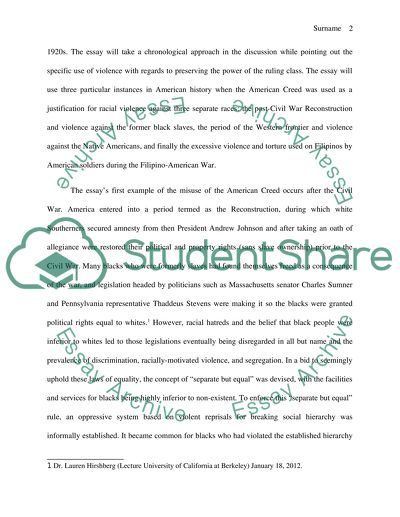Cite this document
(“Violence, the American Creed and the Rulling Class Essay”, n.d.)
Retrieved from https://studentshare.org/history/1443713-american-creed
Retrieved from https://studentshare.org/history/1443713-american-creed
(Violence, the American Creed and the Rulling Class Essay)
https://studentshare.org/history/1443713-american-creed.
https://studentshare.org/history/1443713-american-creed.
“Violence, the American Creed and the Rulling Class Essay”, n.d. https://studentshare.org/history/1443713-american-creed.


